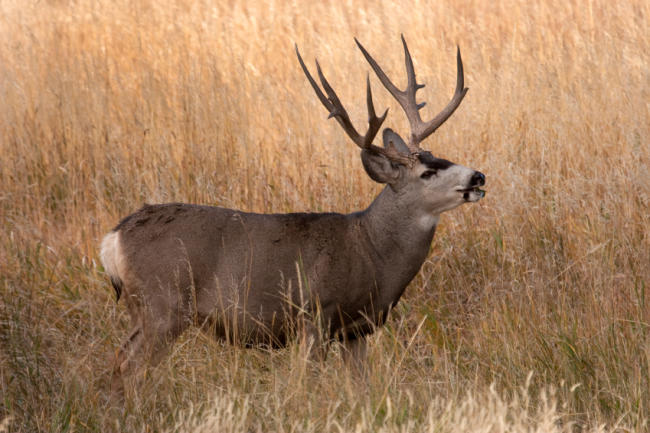Antelope Island is a 42-square-mile piece of land in Utah’s Great Salt Lake. The largest of ten such islands, Antelope features a state park, a genetically pure herd of bison, 130 or so bighorn sheep, and monstrously large mule deer. While the bison are off limits to hunters, the park does offers limited hunting for the sheep and mulies.
How limited? The state of Utah allows one mule deer and one bighorn sheep tag to be auctioned for the park each year, with a second deer tag and sheep tag available for public draw. The auctioned tags routinely draw high premiums because of their rarity, with the mule deer tag reaching a record amount Friday.
According to KSL Broadcasting, the tag was auctioned off for $410,000 at the 10th annual Western Hunting and Conservation Expo. It became the new world record for money spent on a mule deer tag, surpassing the previous record of $390,000 from the 2015 expo.
“Antelope Island has uniquely large genetic antlers so we get large deer and people want the opportunity to get the largest antlered deer,” Division of Wildlife Resources Director Greg Sheehan said.
The tags were first auctioned in 2011. They afford the holder a chance at a mule deer on 26,000 acres of the park, located at the southern end of the island.
The tag’s sale has caused controversy because the hunt is held inside a state park. The park’s officials work in conjunction with Utah’s Division of Wildlife Resources to ensure the safety of participants and bystanders, but that does little to appease opponents.
The fact that two of the four tags go to the highest bidder also ruffles feathers. Large sums are made off the auctions, but the money is funneled back into Antelope Island’s game animals, not, as critics believe, to fund the park. Of the money raised, 90 percent goes to habitat and conservation projects, with the remaining 10 covering the auction’s costs.
The funds raised from 2016’s auction will help build water springs on the island. Antelope Island is surrounded by aptly named Great Salt Lake; few sources of fresh water exist on the island, making it challenging for animals to survive.
The chance at a big buck and the ability to directly benefit wildlife makes the auction a popular event. With mule deer populations declining across the American West, carefully managed areas like Antelope Island are important to the species. With those positive results in mind, would you pay $410,000 for a mule deer tag?


This can be a difficult decision in this case. Although there is no way I could bid on any hunt, I think that in this particular case I see no value to conservation. Being this is controlled area I would almost bet that the carrying compacity of the island is already there. Increasing it would require feeding as the habitat could be over run and disease then could be a problem.
Living in Mn. and being active in multiple organizations in hours,money and prize donations for many decades, the only thing we are seeing are less game, and less opportunities due to urban sprawl and leased properties. Although we do have quite a bit of government land, they are generally overhunted and poorly managed if at all.
If I had the financial wherewithal…especially since 90% goes to conserve game animals. I dare say that most who protest provide only lip service to conservation, don’t buy hunting licenses (whether or not they hunt), “duck” or other conservation stamps or donate to any organization dedicated to conservation that includes hunting as a management tool, e.g., DU, RMEF, PF, NWTF, etc. Few protesters are willing to fund wildlife conservation at the level that those of us who hunt do (through license fees, Pittman-Robinson, habitat management/maintenance) and most are ignorant of the costs of conservation.